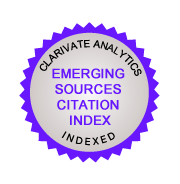Teaching method Socioneuropsicológico and stimulation of the cerebral hemispheric integration, students at the primary level
DOI:
https://doi.org/10.24310/innoeduca.2017.v3i1.1674Keywords:
TEACHING METHOD, STIMULATION, NEUROSCIENCE PREDOMINANCE, HEMISPHERIC INTEGRATION, CEREBRAL HEMISPHERESAbstract
The research aimed to systematize the teaching method "Socioneuropsicológico" in a theoretical concept, focusing primarily on procedures that encourage dominance in cerebral hemispheric integration, right-left, based on theories derived from neuroscience and educational sciences. It has used the research design called "randomized group design pre and post test". The sample consisted of students from two sections of sixth grade School "San Juan de la Libertad" - Chachapoyas, one of 17 students in the experimental group and one of 15 for the control group. The hypothesis tested through the T-Student statistic reveals that the experimental teaching method "Socioneuropsicológico" significant evidence of the predominance stimulation in cerebral hemispheric integration, right-left as qualitative-quantitative results. We conclude that the systematic method stimulates the cerebral hemispheric integration, twelve bipolar functions. The left brain function are stimulated verbal, analytical, symbolic, mathematical abstraction, logical and rational, temporal, visual, intellectual, specific interpretation and convergence. In the right brain functions are stimulated nonverbal, synthetic, spatial, artistic, concreteness, emotional, timeless, kinesthetic, sensual, systemic, divergence and creativity.Downloads
Metrics
Publication Facts
Reviewer profiles N/A
Author statements
Indexed in
-
—
- Academic society
- N/A
- Publisher
- Universidad de Málaga
References
Álvarez, M. & Trápaga. M. (2005). Principios de neurociencias para psicólogos. Buenos Aires: Paidós.
Arias C. (marzo, 1999). Predominancia de los hemisferios cerebrales en los residentes de medicina. Revista Médica Herediana. Universidad Peruana Cayetano Heredia. Facultad de Medicina "Alberto Hurtado". Lima. 10(01). pp. 28-34. Recuperado desde, http://sisbib.unmsm.edu.pe/bvrevistas/Investigacion_Psicologia/v12_n1/pdf/a07v12n1.pdf.
Chalvin, J. (2003). Los dos cerebros en el aula. 3era ed. Madrid: TEA Ediciones.
Ehrenberg, O. et al. (2004). Cómo desarrollar una máxima capacidad cerebral. 2da. edición. Madrid: Editorial EDAF, S.A.
Hernández B. (setiembre, 1990). La experiencia artística y el lado derecho del cerebro. Arte, Individuo y Sociedad. Departamento de Didáctica de la Expresión Plástica. Universidad Complutense de Madrid. Madrid. N° 03, pp. 99-109. Recuperado desde, http://revistas.ucm.es/bba/11315598/articulos/ARIS9090110099A.PDF.
Kandel, E. et al. (2005). Neurociencia cognitiva. Madrid: PEARSON Preinttice Hall.
Lázaro B. (2007). Organizadores LAN-SIC. Investigación: Universidad Nacional Toribio Rodríguez de Mendoza de Amazonas. Investigaciones e innovaciones en apoyo a la calidad de la educación universitaria en el Perú. Lima: ANR. Tomo I. pp. 119-147.
Lora C. (2003). Mitologías universales y latinoamericanas. Lima: Juan Gutemberg.
Luria, R. (2005). El cerebro y el psiquismo. Docencia. Revista de educación y cultura. Lima. Año V, número 14; pp. 60-69.
Machado, L. (2005). La revolución de la inteligencia: el derecho a ser inteligente. 16ª edición. México: TRILLAS.
Portellano, J. (2005). Introducción a la Neuropsicología. Madrid: McGRAW-HILL/INTERAME-RICANA DE ESPAÑA, S. A. U.
Roeders, P. (1997). Aprendiendo juntos. Un diseño del aprendizaje activo. Lima: Walkiria Ediciones.
Torres L. (2007). Educación matemática y desarrollo del pensamiento lógico matemático. Fundamentos y aplicaciones. Lima: Rubiños Ediciones.
Downloads
Published
How to Cite
Issue
Section
License
All contents published by Innoeduca. International Journal of Technology and Educational Innovation are subject to Creative Commons Attribution-Nocomercial-NoDerivatives 4.0 International License, whose complete text can be consulted at https://creativecommons.org/licenses/by-nc-nd/4.0/legalcode. Thus, copying, distribution, public communication, derivative works and commercial use of content are permitted as of the aforementioned issue provided that the source and the author of the text are cited.
It is the responsibility of the authors to obtain the necessary permits for images that are subject to copyright.

This work is licensed under a Creative Commons Attribution-NonCommercial-NoDerivatives 4.0 International License.












242.png)








